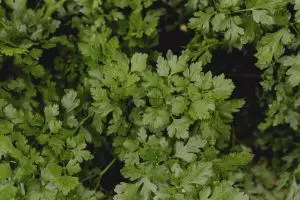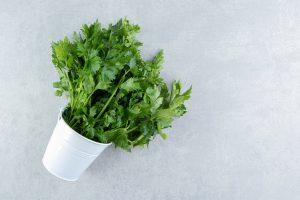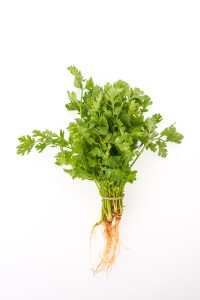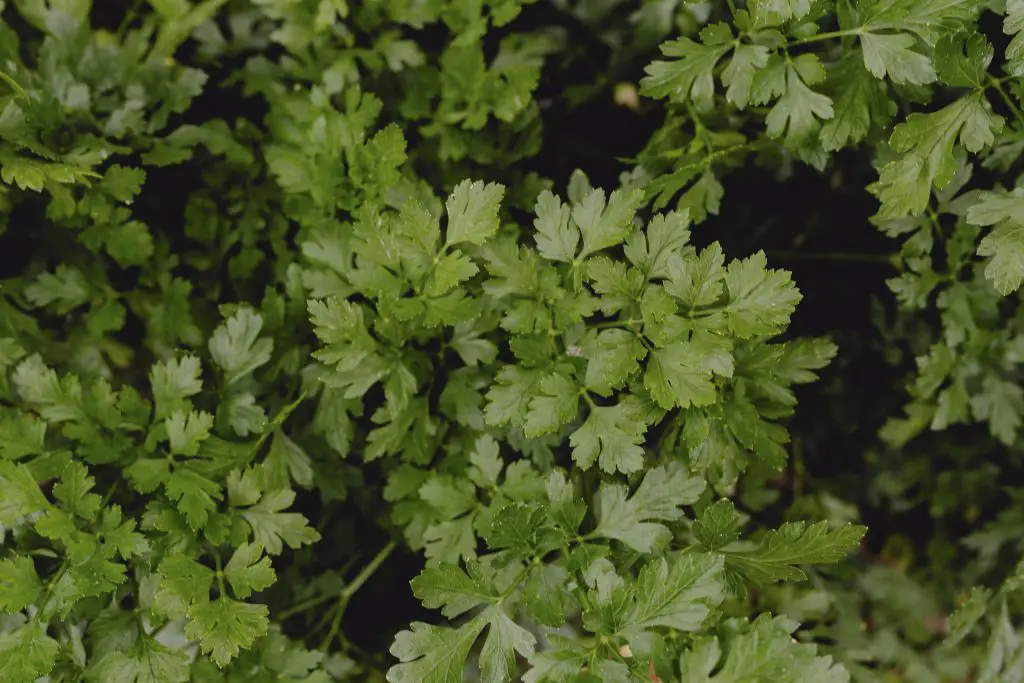Cilantro, a versatile herb with a refreshing flavor and aroma, holds a special place in the culinary world. Whether you’re an avid home gardener or a commercial farmer, understanding the importance of proper spacing in cilantro cultivation is key to maximizing its growth potential and reaping a bountiful harvest. Additionally, recognizing cilantro’s wide range of culinary and medicinal uses adds to its allure as a valuable plant to include in your garden or farm.
Proper spacing is essential for cilantro plants, whether you’re growing them for their flavorful leaves or their prized coriander seeds. By providing sufficient space, you create an environment that promotes healthy root development, robust foliage growth, and the prevention of diseases or nutrient competition.
Cilantro’s culinary uses are widespread and celebrated across various cuisines worldwide. Its bright, citrusy flavor adds a distinctive touch to salsas, salads, soups, curries, and seafood preparations. From Mexican cuisine’s classic guacamole to Indian curry dishes, cilantro is an essential ingredient that enhances the taste and aroma of countless recipes.
Beyond its culinary applications, cilantro possesses medicinal properties valued for centuries. It is believed to have antioxidant, anti-inflammatory, and antibacterial properties, making it a popular herb in traditional medicine. Cilantro is also known for its potential to aid digestion, support detoxification, and promote overall well-being.
By understanding the significance of proper spacing and exploring cilantro’s culinary and medicinal benefits, you can confidently cultivate this herb and harness its full potential. The following sections will explore the factors influencing cilantro spacing, recommended spacing guidelines for leafy cilantro and coriander seeds, and additional considerations to optimize your cilantro cultivation experience. Get ready to embark on a journey combining practical gardening knowledge with the joys of flavor and wellness that cilantro brings.
Contents
Understanding Culinary Cilantro:
Cilantro, also known as coriander or Chinese parsley, is a popular herb for its vibrant leaves and distinctively refreshing flavor. To cultivate cilantro successfully, it’s essential to have a comprehensive understanding of its description, characteristics, and the factors that influence its spacing requirements.
Description and Characteristics of Leafy Cilantro:
Leafy cilantro is primarily grown for its tender, parsley-like leaves that offer various culinary creations a zesty, citrusy taste. This annual herb belongs to the Apiaceae family and typically reaches a height of 1 to 2 feet (30 to 60 centimeters) with feathery green foliage. Its delicate leaves feature a unique blend of flavors, combining notes of lemon, lime, and a subtle hint of earthiness.
Factors Influencing Cilantro Spacing:
When determining the spacing for leafy cilantro, two key factors are root system development and foliage growth. Proper spacing considers these factors, allowing each plant to access the necessary resources for optimal growth and health.
Root System Development:
- Cilantro plants require sufficient space for their root systems to develop and spread. A well-established root system promotes efficient nutrient absorption, anchoring the plants securely in the soil. Adequate spacing between cilantro plants prevents overcrowding and resource competition, ensuring each plant has ample room to establish a robust root network.
Foliage Growth:
- Leafy cilantro thrives when it has enough space to develop lush foliage. You encourage the growth of healthy, abundant leaves by providing appropriate spacing. Sufficient airflow around the plants prevents moisture buildup and reduces the risk of fungal diseases. Well-spaced cilantro plants also receive adequate sunlight, enabling optimal photosynthesis and leaf production.
Optimal Seed or Seedling Spacing for Leafy Cilantro:
To achieve the best results when planting cilantro seeds or seedlings for leafy growth, it’s important to adhere to recommended spacing guidelines. The following spacing recommendations are ideal for facilitating robust root development and promoting lush foliage:
- Aim for a seed or seedling spacing of approximately 6 to 8 inches (15 to 20 centimeters) between individual cilantro plants. This spacing allows each plant to grow without crowding, ensuring sufficient access to nutrients and moisture.
Recommended Row Spacing for Leafy Cilantro:
In addition to individual plant spacing, row spacing is crucial in cilantro cultivation. Appropriate row spacing provides ample room for airflow and easy access to the plants for maintenance and harvest. Follow these guidelines for optimal row spacing when growing leafy cilantro:
- Maintain a distance of approximately 12 to 15 inches (30 to 38 centimeters) between rows. This spacing allows for proper air circulation, reducing the risk of fungal diseases and promoting healthy growth.
By considering the factors that influence cilantro spacing and adhering to the recommended seed or seedling spacing and row spacing for leafy cilantro, you create an environment conducive to robust root development, lush foliage growth, and, ultimately, a successful harvest of flavorful cilantro leaves.
Cultivating Coriander Seeds:
Coriander seeds, derived from the cilantro plant, have their unique culinary significance and are highly valued for their warm, aromatic flavor. When cultivating cilantro specifically for coriander seed production, it is important to understand the distinct characteristics of this phase of the plant’s life cycle and the factors that influence its spacing requirements.
Description and Characteristics of Cilantro for Seed Production:
Cilantro plants destined for seed production differ slightly in their characteristics compared to those grown for their leafy foliage. As the cilantro plant matures, it undergoes a transition from leafy growth to the development of sturdy stems and seed heads. The foliage becomes coarser and less delicate while the plants focus on producing flowers that eventually give way to coriander seeds. The transformation from cilantro to coriander seed plant marks an important stage in the cultivation process.
Factors Influencing Cilantro Spacing for Seed Production:
When growing cilantro for seed production, two key factors come into play: stem development and seed head production. These factors significantly impact the spacing requirements for cilantro plants during this phase.
Stem Development:
- Coriander plants require adequate spacing to allow for proper stem development. Spacing influences the strength and structure of the stems, which bear the weight of the seed heads. Sufficient space enables the plants to grow sturdy stems capable of supporting the seed heads as they mature and become heavier.
Seed Head Production:
- Proper spacing is crucial for promoting healthy seed head production in cilantro plants. Ample space allows the seed heads to develop fully without crowding or overlapping. Sufficient airflow around each plant reduces the risk of moisture buildup and the onset of diseases that could impact seed production. Optimal spacing ensures the seed heads have enough room to mature and yield high-quality coriander seeds.
Optimal Seed or Seedling Spacing for Coriander Seeds:
To achieve the best results when cultivating cilantro for coriander seeds, adhere to recommended spacing guidelines for optimal stem development and seed head production:
- Aim for a seed or seedling spacing of approximately 8 to 10 inches (20 to 25 centimeters) between individual cilantro plants. This spacing allows each plant to develop sturdy stems supporting the seed heads.
Recommended Row Spacing for Coriander Seeds:
In addition to individual plant spacing, row spacing is a critical consideration when cultivating cilantro for coriander seeds:
- Maintain a distance of approximately 15 to 18 inches (38 to 45 centimeters) between rows. This spacing allows for proper air circulation, minimizing the risk of fungal diseases and providing adequate room for the seed heads to develop and mature.
By considering the factors influencing cilantro spacing for seed production and following the recommended seed or seedling spacing and row spacing guidelines, you can create an environment supporting robust stem development and abundant seed head production. This paves the way for a successful harvest of flavorful and aromatic coriander seeds, adding a distinctive touch to your culinary endeavors.
Bolting and Succession Planting:
Cilantro plants naturally tend to bolt, which refers to the rapid transition from vegetative growth (producing leaves) to reproductive growth (flowering and seed production). Understanding cilantro bolting and implementing succession planting strategies are vital for managing this process and ensuring a continuous supply of fresh cilantro leaves.
Understanding Cilantro Bolting and Its Impact on Spacing:
Bolting in cilantro is primarily triggered by environmental factors such as increased temperatures and longer daylight hours. When cilantro bolts, it shifts its focus from leaf production to flowering and seed development. This transition impacts the overall growth and spacing requirements of cilantro plants.
Bolting can reduce leaf quality and quantity as the plants divert their energy toward reproductive efforts. The elongation of stems and the development of flowers can cause overcrowding, affecting air circulation and increasing the risk of disease.
Strategies for Managing Bolting and Prolonging Leaf Production:
To manage to bolt in cilantro and extend leaf production, the following strategies can be employed:
- Harvesting: Regularly harvest cilantro leaves to encourage continuous growth and delay the onset of bolting. Harvesting prevents plants from diverting energy toward reproductive processes.
- Pruning: Prune the flowering stems to redirect the plant’s energy back to leaf production. Removing the flowers helps maintain the focus on foliage growth.
- Shading: Provide some shade to cilantro plants during the hot summer months. This can be achieved by placing shade cloth or planting cilantro in areas with partial shade. Shading helps moderate temperatures and reduce the likelihood of bolting.

Importance of Succession Planting for a Continuous Cilantro Supply:
Succession planting is used to stagger plantings regularly, ensuring a continuous supply of cilantro leaves throughout the growing season. Implementing succession planting is crucial for overcoming the challenges of cilantro’s tendency to bolt quickly.
By planting new cilantro seeds or seedlings every few weeks, you ensure a rotation of plants at different stages of growth. This approach provides a constant supply of young cilantro plants that haven’t bolted yet, allowing for a steady harvest of fresh leaves.
Timing and Frequency of Successive Plantings:
To achieve a continuous cilantro supply, the timing and frequency of successive plantings are essential:
- Timing: Begin successive plantings in early spring or late summer, avoiding the hottest parts of summer when cilantro is more prone to bolting. Timing is crucial to align planting with optimal growing conditions.
- Frequency: Plant new cilantro seeds or seedlings every 2 to 3 weeks. This interval ensures a staggered harvest and allows for a steady rotation of mature plants and young seedlings.
Adopting a succession planting approach and carefully timing and spacing cilantro plantings allows you to enjoy a continuous supply of fresh cilantro leaves, minimizing the impact of bolting and maximizing your cilantro harvest.
Remember, while cilantro’s bolting tendency may present challenges, with proper management and succession planting, you can maintain a thriving cilantro crop and enjoy its flavorful leaves throughout the growing season.
Thinning for Optimal Spacing:
Thinning cilantro seedlings is a crucial step in cilantro cultivation that ensures plants have adequate space to grow, thrive, and maximize their potential. Understanding the importance of thinning, knowing when and how to thin cilantro plants, and recognizing the benefits of proper thinning is key to promoting plant health and achieving optimal growth.
The Importance of Thinning Cilantro Seedlings:
Thinning refers to removing excess seedlings to create proper spacing between plants. It is essential for cilantro seedlings because overcrowding can hinder their development and compromise overall plant health. Thinning allows the remaining seedlings to access essential resources such as nutrients, water, and sunlight without competition.
When and How to Thin Cilantro Plants:
Thinning cilantro plants should be done at the right growth stage to ensure the best results. Follow these guidelines for when and how to thin cilantro plants:
- Timing: Thin cilantro seedlings when they have reached a height of 2 to 3 inches (5 to 7.5 centimeters) and have developed their first true leaves. This stage usually occurs about 2 to 3 weeks after germination. Thinning too early may risk removing potentially viable seedlings while thinning too late can lead to stunted growth and increased competition.
- Spacing: Aim for spacing approximately 6 to 8 inches (15 to 20 centimeters) between cilantro plants after thinning. Carefully remove the excess seedlings, leaving behind the healthiest and strongest ones. It’s best to gently pull out the unwanted seedlings rather than cutting them to minimize disturbance to the remaining plants.
Benefits of Proper Thinning for Plant Health and Growth:
Proper thinning offers numerous benefits for cilantro plants, promoting their overall health and growth:
- Reduced Competition: Thinning eliminates overcrowding, allowing each cilantro plant access to essential resources. This reduces competition for nutrients, water, and sunlight, ensuring optimal growth for the remaining plants.
- Improved Air Circulation: Thinning enhances air circulation around the cilantro plants, reducing the risk of fungal diseases. Ample airflow helps to keep the foliage dry, preventing the development of moisture-related issues.
- Enhanced Light Exposure: With proper spacing, cilantro plants receive adequate sunlight penetration to their lower leaves, positively impacting photosynthesis and overall plant vigor.
- Disease Prevention: By thinning cilantro plants, you create distance between them, reducing the likelihood of disease spread. Increased airflow and reduced humidity discourage the development and spread of fungal infections.
- Harvest Quality: Thinning promotes the development of high-quality cilantro leaves. Proper spacing allows the remaining plants to grow robust foliage, ensuring abundant and flavorful harvests.

By recognizing the importance of thinning cilantro seedlings, knowing when and how to thin plants, and understanding its benefits, you can create an optimal growing environment for cilantro. Thin your cilantro seedlings appropriately, provide sufficient spacing, and watch your plants flourish, leading to healthy and productive harvests.
Conclusion:
Proper spacing is crucial to successful cilantro cultivation, whether you are growing it for its leafy foliage or coriander seeds. Throughout this article, we have explored the significance of cilantro spacing and its impact on various aspects of plant growth and development. By considering factors such as root system development, foliage growth, stem development, and seed head production, we can optimize spacing for cilantro plants and achieve optimal results.
Maintaining adequate spacing between cilantro plants ensures robust root systems, promotes healthy foliage growth, and supports sturdy stems and abundant seed head production. It allows for proper airflow, reduces the risk of diseases, and ensures access to essential resources like sunlight, water, and nutrients. Thinning seedlings at the right time and implementing succession planting techniques are vital for managing cilantro bolting and maintaining a continuous supply of fresh leaves.
As you embark on your cilantro cultivation journey, experiment with spacing techniques to find what works best for your specific growing conditions and preferences. Cilantro is a versatile herb, and different spacing approaches may yield varying results. Don’t be afraid to adjust seed or seedling spacing and row spacing based on your observations and experiences.
In conclusion, maximizing cilantro growth and harvest requires careful attention to spacing. By providing the appropriate space between plants, you can promote healthy growth, prevent overcrowding, and optimize resource utilization. Whether you are cultivating cilantro for its leafy foliage or coriander seeds, incorporating proper spacing techniques will contribute to the success of your cilantro garden.
So, embrace the importance of spacing, apply the knowledge from this article, and enjoy the rewarding experience of growing and harvesting flavorful cilantro leaves or aromatic coriander seeds. With a little care and experimentation, you can create an environment that fosters the profitable growth of this versatile herb, adding a delightful touch to your culinary endeavors.
More Posts :
Mastering the Art of Growing and Caring for Jacaranda Trees in Texas: Expert Tips for 2023





